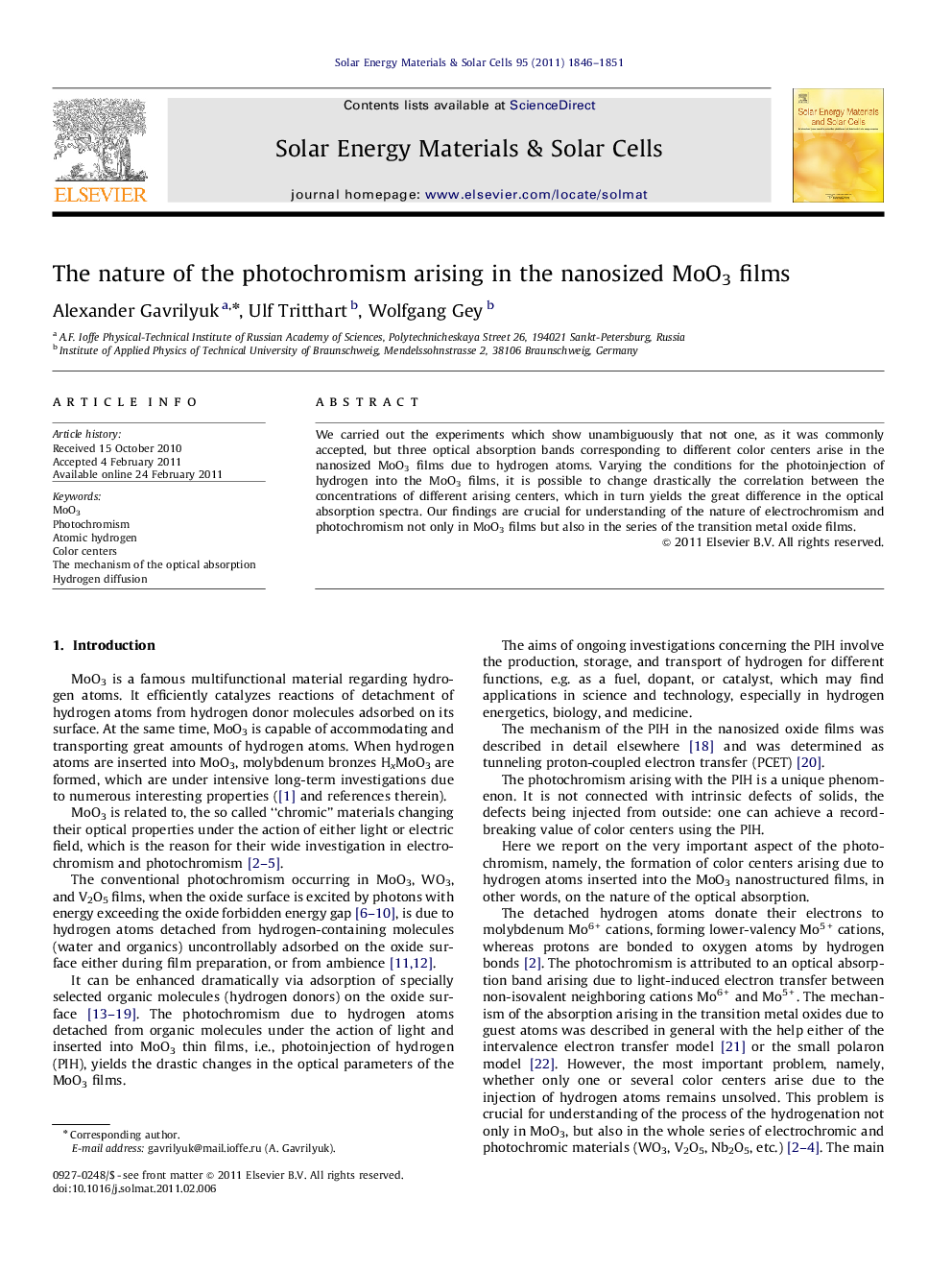| کد مقاله | کد نشریه | سال انتشار | مقاله انگلیسی | نسخه تمام متن |
|---|---|---|---|---|
| 78860 | 49343 | 2011 | 6 صفحه PDF | دانلود رایگان |

We carried out the experiments which show unambiguously that not one, as it was commonly accepted, but three optical absorption bands corresponding to different color centers arise in the nanosized MoO3 films due to hydrogen atoms. Varying the conditions for the photoinjection of hydrogen into the MoO3 films, it is possible to change drastically the correlation between the concentrations of different arising centers, which in turn yields the great difference in the optical absorption spectra. Our findings are crucial for understanding of the nature of electrochromism and photochromism not only in MoO3 films but also in the series of the transition metal oxide films.
Graphical AbstractFigure optionsDownload as PowerPoint slideResearch highlights
► Nanosized MoO3 films evaporated in the vapor of hydrogen-donor molecules.
► Nanosized MoO3 films evaporated in the vapor of hydrogen-donor molecules exhibit photochromism.
► The photochromism arises due to hydrogen atoms detached under the action of light and inserted into the films.
► The arising absorption is attributed to the formation of three different color centers.
► The contribution of each color center into the total absorption depends upon the conditions of illumination.
Journal: Solar Energy Materials and Solar Cells - Volume 95, Issue 7, July 2011, Pages 1846–1851